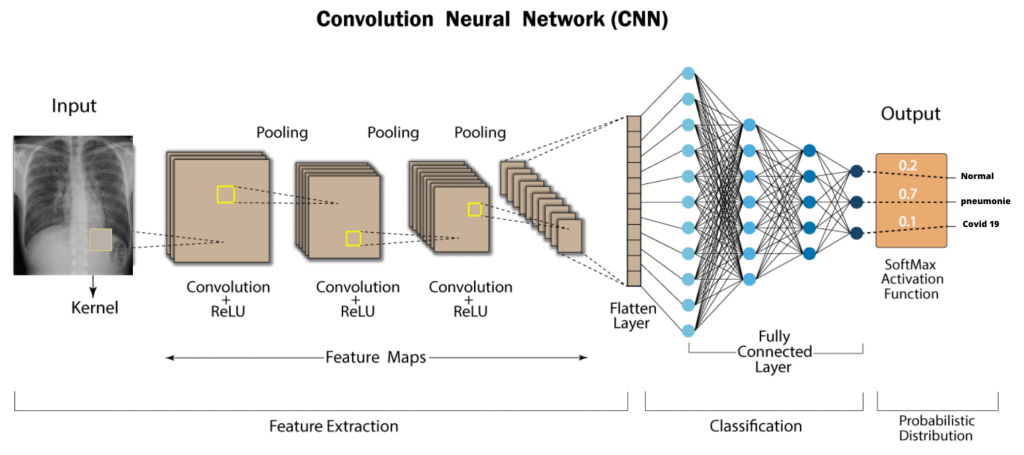What the Heck is a Convolutional Neural Network (CNN)?

Have you ever wondered how Facebook automatically tags people in your photos or how self-driving cars can recognize stop signs? Well, it’s all thanks to a machine learning technique called convolutional neural networks (CNNs). But what are CNNs exactly?
A Brief Introduction to Neural Networks
Before we dive into CNNs, let’s first talk about neural networks. Neural networks are a type of machine learning algorithm inspired by the structure of the human brain. They consist of layers of interconnected nodes (also called neurons) that process data and make predictions.
Each node in a neural network receives input data, performs a series of mathematical computations on it, and then passes the output to the next layer of nodes. This process continues until the final output is produced.
Neural networks have been around for decades, but it wasn’t until the advent of deep learning (a subset of machine learning that uses neural networks with many layers) that they really took off.
What Makes CNNs Different?
Convolutional neural networks (CNNs) are a specific type of neural network that are particularly good at image recognition tasks. They were first introduced in the 1990s, but it wasn’t until the mid-2010s that they really became popular.
So what makes CNNs different from other types of neural networks? The key difference lies in their architecture.
In a traditional neural network, the input data is flattened into a one-dimensional vector before being fed into the network. This works fine for tasks like language processing, but it’s not ideal for image recognition.
Think about it: an image is made up of pixels arranged in a two-dimensional grid. Flattening the image into a one-dimensional vector throws away all of the spatial information about the image.
CNNs, on the other hand, are designed to work with two-dimensional data like images. They use a special type of layer called a convolutional layer that applies filters (also known as kernels) to the input image.
These filters slide over the image and perform a series of mathematical operations on each pixel. The result is a new, filtered version of the image that highlights certain features (e.g. edges, corners, textures).
The Power of Convolutional Layers

The real power of CNNs lies in their ability to learn these filters automatically from the input data. During the training process, the network adjusts the values of the filters so that they can accurately recognize patterns in the data.
For example, let’s say we’re training a CNN to recognize cats in images. During the training process, the network will learn filters that look for things like pointy ears, whiskers, and fur.
As the network gets better at recognizing cats, it will start to combine these filters into more complex patterns. For example, it might learn to recognize a cat’s face by combining a filter that looks for pointy ears with one that looks for whiskers.
Going Deeper with Deep CNNs
CNNs can be made even more powerful by adding more layers. Deep CNNs (also known as convolutional deep belief networks or CDBNs) can have dozens or even hundreds of layers.
Each layer in a deep CNN learns increasingly complex patterns in the input data. The first few layers might learn simple patterns like edges and corners, while the later layers might learn more complex patterns like faces and objects.
The downside to deep CNNs is that they require a lot of computing power to train. But with the rise of cloud computing and specialized hardware like graphics processing units (GPUs), it’s becoming easier and cheaper to train deep CNNs.
Conclusion
So there you have it: a brief introduction to convolutional neural networks (CNNs). These powerful machine learning algorithms have revolutionized the field of computer vision and are behind many of the image recognition applications we use today.
If you’re interested in learning more about CNNs, there are plenty of online resources and tutorials available. Who knows? You might just be the next person to develop a breakthrough CNN application!
- Building a DevOps Culture: Tips and Strategies - April 4, 2024
- Why Understanding DevOps Could Be Your Key To Success In The Music Industry - April 4, 2024
- Top Picks: The Best Laptops for Graphic Designers in 2024 - March 31, 2024

